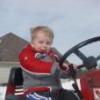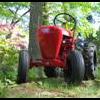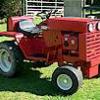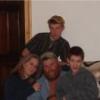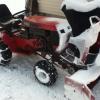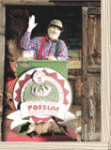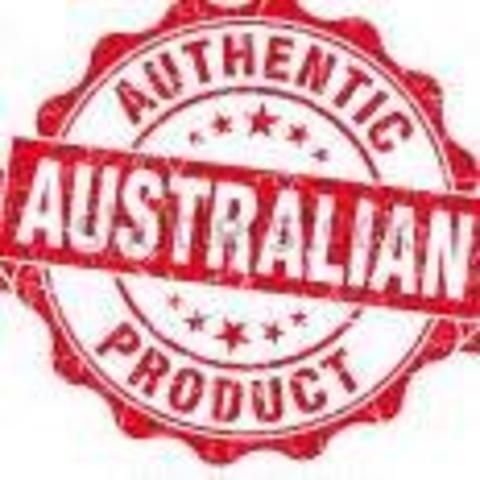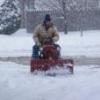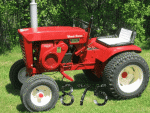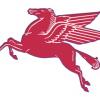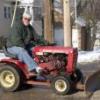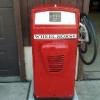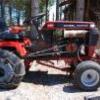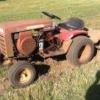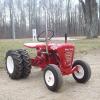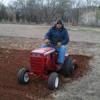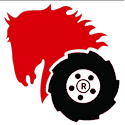Leaderboard
-
in Posts
- All areas
- Markers
- Marker Comments
- Marker Reviews
- Articles
- Article Comments
- Article Reviews
- Classfieds
- Classified Comments
- Classified Reviews
- Wiki's
- Wiki Comments
- Wiki Reviews
- Blog Entries
- Blog Comments
- Images
- Image Comments
- Image Reviews
- Albums
- Album Comments
- Album Reviews
- Files
- File Comments
- File Reviews
- Posts
-
Custom Date
-
All time
November 28 2011 - November 26 2025
-
Year
November 26 2024 - November 26 2025
-
Month
October 26 2025 - November 26 2025
-
Week
November 19 2025 - November 26 2025
-
Today
November 26 2025
-
Custom Date
03/22/2013 - 03/22/2013
-
All time
Popular Content
Showing content with the highest reputation on 03/22/2013 in Posts
-
3 pointsMore progress since yesterday. We decided on a black motor, so black it is! Cole is having second thoughts on black rims, he is now thinking he might like the chome look. With his birthday money I think we are gonna spring for new tires. I think I'm liking his Rod better than mine, maybe he'll do a swaparoo?
-
3 pointsI've owned all of the D-auto models at one time or another but only kept the 1973 18-Auto as my "collectable." So I'll toss my 2 cents in the fountain... I've never been overly impressed with the abilities of the D-autos compared to the C-series, but they certainly have their following. I always felt that they wanted for traction, especially when equipped with the floatation turf tires on the rear. I tried plowing snow with a 56" blade on my D160-K and didn't find it very satisfactory. On my D180 the snowthrower was so heavy on the front that even with wheel weights and extra ballast hanging on the hitch I couldn't get back up my driveway when the blower was lifted. Both tractors had weights and chains. They're also not particularly manueverable. They have a wide turning radius and slow steering that made them uncomfortable (for me) to use for mowing. I'm not sure if the available turning brakes improve this much. The engines used seem to put out obscene amounts of power, so you'll seldom overwork the engine on a D. The tractors were decent machines, but they did have some problems that years of (mis)use can highlight. For example, the early D's and all of the 18-Autos had 3/4" diameter front spindles. These were prone to breaking even without the added stress of front implements. Retrofits to 1" spindles and axles cured that. The steering boxes seem to get very loosy-goosey over time. The transmission itself seems to be a bit undersized for the tractor. The hydro used was also used on much smaller C-series tractors and seems more vulnerable to overheating and premature wear in the D-autos. Transmission temperature gauges were fitted after the 1974 revision and later a transmission cooling fan was added to help alleviate the heat. I think the size of the tractor and its big implements (like the 56" blade or the loader) set these things up for abuse. At some point, 1975 or 1976 I think, Wheel Horse added a pressure relief valve to the transmission bolted to the frame behind the left rear tire to help absorb spikes (and damage) from hard use. These improvements, I think, indicated that the hydro unit was a bit marginal for some applications. The divorced hydro pump and motor was actually, in my opinion, a brilliant idea. Why run a long shaft or belt from the engine to the transmission when a couple of pipes could do the same thing? Simple and effective. The differential bolts have already been mentioned. It's not terribly uncommon to find a tractor with a welded transaxle casing from one of these errant bolts getting pushed through the cast iron. Speaking of transaxles; in/around 1976 Wheel Horse relocated the parking brake control from a separate control on the dashboard to the Direction Control Lever (DCL). The DCL, then, had the obvious positions of Fwd-N-Reverse but also added a Park position accessed by pulling the DCL rearward into a separate slot near the Reverse position. The Park position engaged the parking pawl inside the transaxle (another weak spot). Anyway, apparently this reconfiguration caused problems with operators shifting into Park while still on the move which, of course, introduced the possibility of causing internal transaxle damage. One guy I talked to who has scrapped probably a couple hundred D-autos over the years said it could even cause the transaxle to drop out of the tractor if the loads were high enough and the traction was good enough. The Parking brake control was later moved back to the dashboard and the extra slot was filled with a bolt-on plate. Eventually, a contracting band on an external drum replaced the internal pawl on all Wheel Horse hydros including the D. But they did offer some big attachments and a lot of guys really like them. Strangely, the biggest belly deck ever offered was a 48" unit. But 60" and even a 72" rear mower (from Woods) was offered. The 72-incher is exceedingly rare and I've only ever known of one of them that Jim M had. 54" and 56" front blades, 50" mid blades, Ark 550 loaders, 48" thrower, and - of course - the backhoe attachments were offered. You can see that the dreams and plans for the D-autos were big. The 50" tiller is a brute. Early versions were actually 38" in width with optional extensions for the total 50" width. But be advised that the input gear tends to be a bit weak and the tiller should NEVER be used with the 3pt hitch set up to provide down pressure. It can overload the tiller and can lift the rear of the tractor enough to propel it forward with considerable and uncontrollable eagerness. The market was for "estate" owners and pretty much whomever now would be buying a Sub Compact Utility Tractor. They remained in the lineup a long time and must have acheived pretty good sales considering how expensive they were. 1973 marked the introduction of the series with the 18-Automatic. In 1974, the tractor was mildly changed (the dashboard changed to include more gauges, the parking brake lever moved from the "hump" to the dash, and the space under the hood grew taller by about an inch) and the D160 with a Kohler k341 single cylinder joined the lineup, the D180 with a Kohler k482 replaced the 18-Auto, and the D200 with a k532 was added. The D160K was a stripper tractor with no headlights, a simple seat, and smaller engine. The top line D200 was fully dressed with PTO/3pt/and turning brakes. D180's and D200's had a "suspension seat" mounted on a big spring and easily adjusted forward and aft. I think the seats themselves were different. And the D200 had a 5-gallon gas tank whereas the others were smaller. In 1978 (I think) the 16-kohler was dumped for the Onan 16 horse twin BF-something. The D180 was dropped. And the D200 soldiered on. I think eventually the 3pt was added as standard to all D's. Probably to use up parts or something. The C195 and D250 experiments and the end of the run for the D-autos put the nail in the coffin for WH dipping a toe in the larger tractor market. I too found implements hard to find, but 3pt/PTO attachments can be had if you look outside the WH family. The 2000 rpm rear PTO and the cat 0 hitch really became the standard for many garden tractors up through the 1980's or 1990's. Deere and Cub Cadet (probably others) offered 2000 rpm bush hogs, tillers, and finish mowers. The location of the PTO shaft itself was a bit goofy on some Cubs that might make their implements hard to interchange, but there is more out there than I first realized. The D250, on the other hand, is really wacky with a 1000 RPM PTO that spins in the opposite direction (CCW). The D-autos were GOOD tractors. But not great. The C-series were GREAT tractors. Wow, that's a lot of typing for 2 cents. Not necessarily much value though. Steve
-
2 pointsI got my rear axle bracket welded up yesterday and put some primer and red paint on it. When I get an extra hour sometime I will pull the rear wheels and remove Scott's receiver hitch and install this and be ready for the tiller and the grader blade.
-
1 pointWhy do you say its not the good cub??? Its an International Harvester. Not trying to say you don't know what you are talking about. I'm just curious. I like IH Cubs. I have a 1650 with the K-341. What model is it? I can't quite make it out on my computer. I always enjoy seeing some yellow here on Red Square. Thats an 1100 cadet. It was the cheap version of the time. 11hp Briggs that they discontinued and no longer make any parts for and a 4 speed peeless trans. The engine is a weird setup, with the carb and air cleaner on the opposite side of the block from the intake valve. It was a decent mowing tractor but when it came to a tiller or snowblower it just wasnt as good as your 1650 or one of the other models with a kohler and the 3 speed or hydro trans. At one point Cub Cadet put out a service buliten for an engine replacement for the 482 which was basicaly the same other than the hoods and side panels. It was for putting in a 14 hp Briggs v-twin from their newer 1440 model and at the bottom of the buliten it said that it should work for the 1100 as well with a couple other modifications.
-
1 point
-
1 pointHaven't managed to watch the video yet but a bit of Googling suggests that he might be Roger Lee Arbogast who lives in Chardon. Did he look to be about age 56? Is so it could be da man. He's probably never head of RS but deserves an RS award for getting a WH on TV news pushing snow IMO. Andy
-
1 point
-
1 pointReally, click on the "library" tab...your albums show up on the left and work like the old bucket.
-
1 pointHell, I was about to decide I had been doing it wrong, All them fancy tools and you still did it my Poor boy way.
-
1 pointWell I took the K I S S route (keep it simple stupid) repairing the spindles. I I just filled the worn places with braze and sanded/filed back to the needed .875 dia. Knowing this alone wasnt going to remove the slack, I knew I was gonna have to bore the axle,which was worn about as bad as the spindles, and install bushings. so the brazing method should bring it back close. Its not back to factory specs, still got a bit of slack in the bottom, but the top - which was worn so badly - is good and snug. Sure do love my mill and lathe.... I used the handy-dandy little HF belt sander to knock down the worst of the bumps and then filed it til it slipped in the new bushings. Then got the axle cobbled up in the mill (that 10° angle is a pill to work with) and bored out to accept the bushings.
-
1 pointI found the video http://www.19actionnews.com/category/240218/video-landing-page?clipId=8669718&autostart=true then click on the video ( the snow just keeps coming) to watch the vidio
-
1 pointThese guys all missed the best way. Go out and buy another tractor just like whatever your restoring so you'll have a tractor to refer to ! Its a perfect excuse to buy another tractor right?? Mike...........
-
1 pointI'll add a little more - the engines are mounted longitudinally with a PTO arrangement at the front of tractor and the hydro pump unit mounted behind. The tractors came in a basic form with optional extras that included a front to rear PTO shaft with CAT 0 couplings front and rear, a CAT 0 three point hitch, and turning brakes for the rear axle. The mid hitch was hydraulic and a standard feature and some of the plumbing was in place to take the optional rear three point. A FEL was also available. The D-250 was not a Wheel Horse at all, it was built by Gutbrod in Germany based on their 2500S I think. These were all designed with heavier work in mind than the smaller horses but marketing material continued the tradition of portraying WHs in a home rather than agricultural situation. Here in the UK relatively few were sold, mainly I think due to the cost which was similar to an average family sized automobile and more expensive than some small agricultural tractors. You only have to tear one apart to discover that they couldn't have been easy to assemble in the first place which must have added to the cost. I get the impression thet here they were purchased in the main by small horticultural businesses or for grounds maintenance on country estates. The choice of CAT 0 as the standard together with the PTO speed meant that you were pretty much limited to buying WH attachments to go with it - another reason I guess that they weren't great sellers this side of the pond. Many will think them ugly but they have a certain charm that grows on you and takes control just as it does with other WHs. I recently picked up a second D to add to my stable. Andy
-
1 point
-
1 pointRaider 14 was only produced in '72. How many? As noted above, WH knows. Picture attached is my '68 Raider 12. A great "can do it all" Stallion! Decals (shown incomplete) products from www.redoyourhorse,com ~ very nice, excellent products! Product Details List (courtesy of Yahoo Groups) Model Number 1-0320 Model Year 1972 Beginning Serial None Ending Serial None Product Name Raider 14 Tractor Product Brand Wheel Horse Product Type Riding Products Product Series Garden Tractor, Pre '74 Swath Deck Optional Discharge Deck Optional Engine/Motor Manufacturer Kohler Engine/Motor Model K321S-60137A Engine/Motor Size 14 hp Engine/Motor Type 4 Cycle Engine Starter Electric Transmission Manufacturer Wheel Horse Transmission Model 5073 Transmission Speeds 8 Speed Transmission Type Gear Tractor 1972 Raider 14 1-0320 OM Download Long frame 45-1/2" wheelbase Uses 5073 8-speed transmission with 10-pinion limited slip differential and 1-1/8" axles Uses Kohler K321S-60137A with electric start, starter solenoid, 15 amp stator, ammeter and battery ignition [uses (~101917 5-terminal 4-position S-R-B-I-A) replaced by 92-6785 5-terminal 4-position S-R-B-I-L ignition switch] (PSB# 338B in the Files of Group 8 states Item 11-23 P/N not shown. The electric clutch switch is P/N 102138, same as light switch)
-
1 pointI got my popcorn on the way IN. The popcorn is the reason I stop by there a couple times a week.
-
1 pointI second that! I am lovin' this 520-8 even before I've used it. The 520-8 must be a rare bird, I found this one sittin', wasn't used in two years. Previous owner had problems, all worked out now. The 414-8 or 416-8 are both fine Stallions too! A lot easier to find and purchase too. I have been working on this Horse for a couple of months. Just applied the decals that Terry made, a beautiful job I might add. Next up SS muffler shield, deck and Attach-A-Matic decals.
-
1 pointPacer,I started with a piece of round stock and a piece of 1/4 x 2 flat stock.I bored the hole for the round,slipped in in a welded it.Then from the same flat stock I bored two "tabs" to fit the spindle.I center drilled the sprindles in the mill.I slipped the tabs onto the spindle,put the live center in the center drilled hole and used the tail stock to hold the whole works in place.I tacked the sides of the tabs,checked it for run out and then welded the tabs in place.It's not perfect but it works good enough for a house of its type.
-
1 pointI have this very talented friend of mine who hand drawn one of my Wheel Horse tractors. It came out awesome he spent over 15 hours drawing it out of color pencils!! He's making me 4 Wheel horse tractors in one picture next. I told i might sell this one for him. Let me know what you guys think!!
-
1 pointI've got 3 of them and a couple string trimmers. I was a Husky guy for years. Then I had a couple problems getting parts. Husky makes a great saw BUT I have 2 stihl dealers within 2 miles of my home. Husky dealers are few and far in my neck of the woods. The ms441 is my do anything saw. I have a 25" bar but prefer the 18". It's good o have choices. The ms 270 with a 16" is a nice mid weight saw thatll blow through anything with that short blade. But my favorite is the one I got for $7 at a yard sale the ms 180. I leave the 180 upstate. It's mostly pine trees there and that little saw rips! It's weightless and just keeps going. I run a brush blade, hedge trimmer, 12" saw, and of course trimmer heads on the string trimmers. There commercial duty machines. One at home the other up north. It's kind of hard to beat the versatility of these things. You certainly get what you pay for!
-
1 point
-
1 pointIts not a perfect solution but I weld up the badly wore spots and use a hand held mill file and finish of with emery cloth. Sounds worse than it really is, doesnt take to long.
-
1 point
-
1 point
-
1 point
-
1 pointThere are 2 types of Cub LoBoy. One is a shorter version of the offset Farmall Cub and the other is a Cub driveline in a frame and looks like the Cub Cadets, and also has a model number to go with the LoBoy name. I.E. 154, 184, and 185. If its one of the numbered type there an okay tractor if you want to do some mowing but as for heavier ground work its not the best. As its already been stated they have clutch issues as well as pto clutch issues, hydraulic issues and the steering wasnt designed for a tractor that big(its basicaly an oversized ross steering box simmilar to what the d series have). If either of the clutches has a problem and needs repair it can easily run into the $1,000 range for each one. The pto also runs backwards from a standard pto on any other farm tractor and runs at 2000 rpm like the d series do, so there limited to the attachments made for them by International and the Woods mower decks. I've had to work on several and after doing so I would never buy one to use, maybe to have one to complete a collection of the different types of Cubs or if it was cheap enough and i needed engine or transmission parts for a regular Cub. But that would be it. Hope this helps. Stewart

